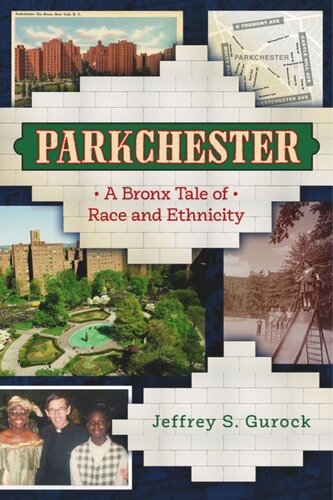

Most ebook files are in PDF format, so you can easily read them using various software such as Foxit Reader or directly on the Google Chrome browser.
Some ebook files are released by publishers in other formats such as .awz, .mobi, .epub, .fb2, etc. You may need to install specific software to read these formats on mobile/PC, such as Calibre.
Please read the tutorial at this link: https://ebookbell.com/faq
We offer FREE conversion to the popular formats you request; however, this may take some time. Therefore, right after payment, please email us, and we will try to provide the service as quickly as possible.
For some exceptional file formats or broken links (if any), please refrain from opening any disputes. Instead, email us first, and we will try to assist within a maximum of 6 hours.
EbookBell Team

0.0
0 reviewsThe eight-decade story of a New York neighborhood
In 1940, the Metropolitan Life Insurance Company opened a planned community in the East Bronx, New York. A model of what the neighborhood would become was first displayed to an excited public at the 1939 World’s Fair. Parkchester was celebrated as a “city within a city,” offering many of the attractions and comforts of suburbia, but without the transportation issues that plagued commuters who trekked into New York City every day. This new neighborhood initially constituted a desirable alternative to inner city neighborhoods for white ethnic groups with the means to leave their Depression-era homes. In this bucolic environment within Gotham, the Irish and Italian Catholics, white Protestants and Jews lived together rather harmoniously.
In Parkchester, Jeffrey S. Gurock explains how and why a “get along” spirit prevailed in Parkchester and marked a turning point in ethnic relations in the city.
Gurock is also attuned to, and documents fully, the egregious side to the neighborhood’s early history. Until the late 1960s, Parkchester was off-limits to African Americans and Latinos. He is also sensitive to the processes of integration that took place once the community was opened to all and explains why transition was made without significant turmoil and violence that marked integration in other parts of the city. This eight decade history takes Parkchester’s tale up to the present day and indicates that while the neighborhood is today predominantly African American and Latino, and home to immigrants from all over the world, the spirit of conviviality still prevails on its East Bronx streets.
As a child of Parkchester himself, Gurock couples his critical expertise as leading scholar of New York City’s history with an insider’s insight in producing a thoughtful, nuanced understanding of ethnic and race relations in the city.